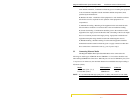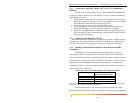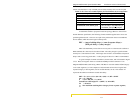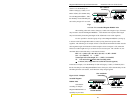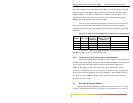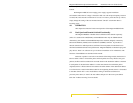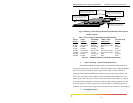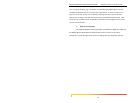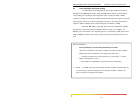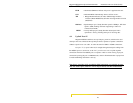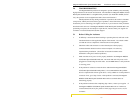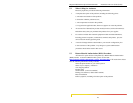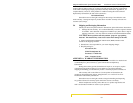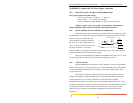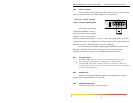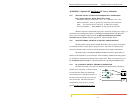
Magnum DS8016 Dual-Speed Stackable Hubs Installation and User Guide (07/06)
25
www GarrettCom com
..
4.2 Auto-negotiation and speed-sensing
All sixteen RJ-45 ports independently support auto-negotiation for shared
10BASE-T and 100BASE-TX modes. When the ‘100’ LED is flashing, it means that the
corresponding port is sending out auto-negotiation pulses on that port. When a LINK
connection is made, the other device should respond and both sides should agree to the speed
being signaled. The device connected, depending on what it is, will either signal that it is
capable of 10Mb or 100Mb speeds. Silence means the port defaults to 10Mb.
When the ‘100’ LED is steady ON, the port has auto-negotiated for 100Mb
operation and is processing packets at 100Mb/s, When it is OFF, it is at 10Mb/s. If a
DS8016 port is connected to a non-negotiating device, it will default to 10Mb speed. Since
Magnum DS8016s are hubs, they always operate in the shared or half-duplex mode on all
ports.
General information -
Auto-negotiation per-port for dual-speed hubs occurs when:
the devices at both ends of the cable are capable of operation at either 10Mb or
100Mb speed, and can send/receive auto-negotiation pulses, and . . .
-- when the second of the two connected devices is powered up*, i.e., when
LINK is established for a port, or
-- when LINK is re-established on a port after being lost temporarily.
NOTE – some NIC cards only auto-negotiate when the computer system that they are
in is powered up. These are exceptions to the “negotiate at LINK – enabled” rule
above, but may be occasionally encountered.



